


This informative section is designed to help the new patients understand the treatments and overall outcome of the treatment, and the factors determining a very good recovery. This guide can equally benefit patients who have had pain management procedures and manual therapy treatments in the past, but with little or no results. The patients who go through this section have found it to be beneficial before and after their consultation, as it helps them understand their problems in a better way and also to decide upon completing their plan of the treatment as per the advice.
We understand that it takes a lot of analysis and research to understand patterns of chronic pain as it keeps varying in intensity and recurring periodically. Having tried multiple treatments in the past leads to anxiety and depression in some cases, therefore, we have attempted to address these issues in this section.
These clinical charts are only for reference following treatments enlisted under the our clinic. This information should not be mistaken as a reference to any other medical condition or treatments offered at any other clinic claiming to offer a similar line of treatment under any circumstances.
Stages of Spinal Damage
Stage I
Spine alignment and disc spaces are normal, slight discomfort, usually muscular strain, and spasm.
Stage II
Slight change in the alignment of the spine, but the disc spaces are near normal, with increased degenerative symptoms and muscular spasms. Nerve tissues are not irritated.
Stage III
Disc space narrowing is present, with significant presentation of acute pain. Degenerative changes in the bones and joint of spine are prominent.
Stage IV
Joint spaces are greatly reduced, bone spurs and changes in the body of vertebrae, highly degenerative stage, with significant nerve irritation.
Stage V
No disc space available between bones and the vertebrae shows tendency to fuse to each other, with significant nerve atrophy and damage.
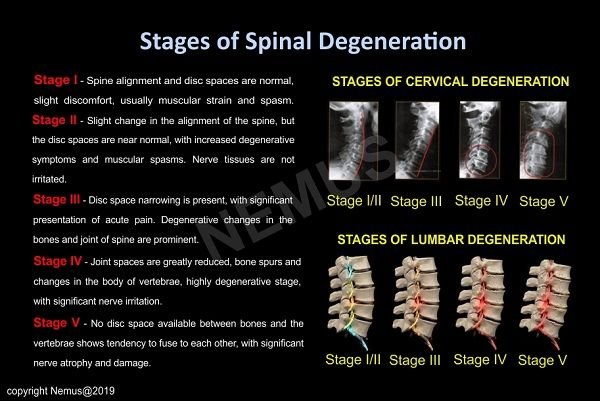
Plan of Care in Manual Treatments
Every medical condition and the response at various phases of treatment show a different recovery pattern. For reference, please refer to the “Recovery Pattern Graphs” illustrated below.
Assessment and Diagnosis Phase – The most important step is to establish a correlation between all the diagnostic scans with the mechanical diagnosis on the patient before and after the application of the manual techniques. After an initial screening of all the medical conditions, when the patient is deemed fit for manual/manipulation techniques, the techniques are applied in a controlled manner. Initial few days, the assessment and changing pattern of the behaviour of the pain and discomfort is noted and phase II of the treatment is planned, which depends on an individual’s sensitivity to manual/manipulation treatments and response to the initial first week of the treatment.
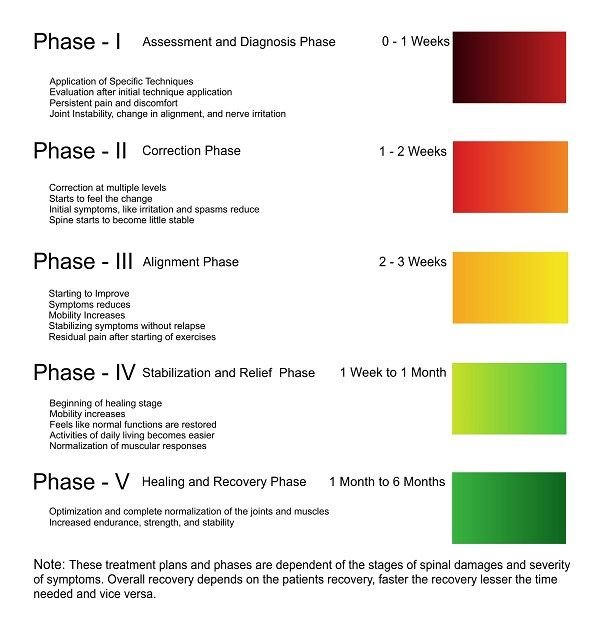
Correction Phase
A major stage in the treatment as the body recovers from the initial treatment response and is usually more adaptive for a variety of techniques. Primarily, the muscle response and joint behavior tolerate manual treatments in a very responsive manner.
Alignment Phase
After the application of corrective techniques, the patient is started on a variety of muscle conditioning and activation techniques and exercises to reduce the imbalance and also to initiate a biomechanical response between the joints and muscles at a higher functional level.
Stabilization Phase
This phase is more of a functional phase, where the frequency of treatment is slowly reduced as the need for treatment reduces, and a patient can manage her/his normal activities without much discomfort. The stabilization techniques taught and suggested to be practiced at home as guided.
Healing and Recovery Phase
Feeling of being near normal and able to perform activities like swimming, running, and light sporting activities are recommended. This is the most important part and mostly comes under long-term maintenance care, which is usually once in a month or 3 months or 6 months period.
TYPES OF RECOVERY

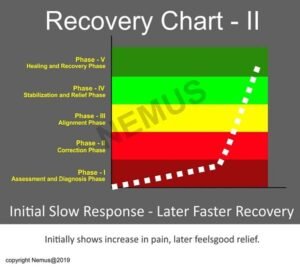
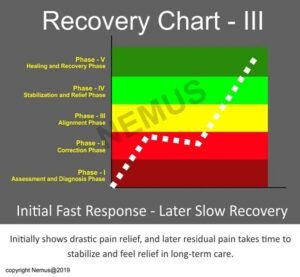
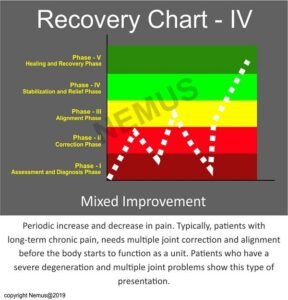
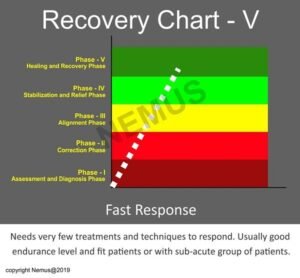
"Our approach has not only simplified the treatments but it also actively involves the patients to recover by our very simplified, yet very dynamic treatment protocols."
Click to chat